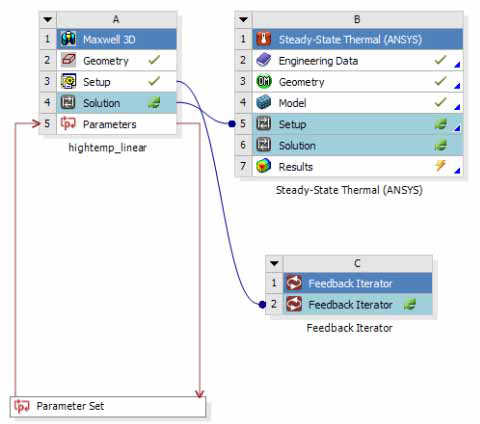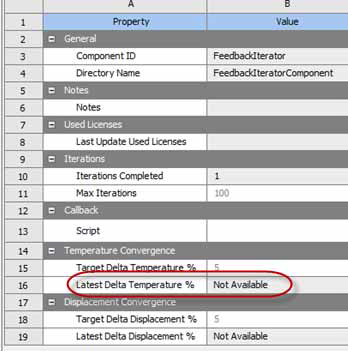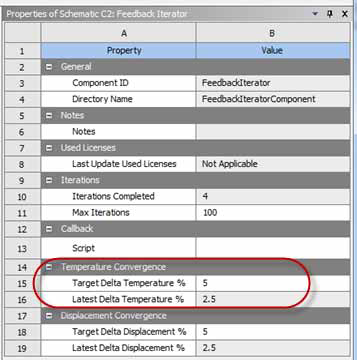Iterating to Convergence
|
Scenario |
Steps to execute |
Outcome |
|
Standard update scenario |
OR
OR
OR
|
For each iteration, the Electromagnetics product solution is updated, followed by the downstream setup and the downstream solution. Each of the client component updates display their progress monitor and can be aborted (resulting in aborting the current iteration)
|
The following temperature convergence example uses Feedback Iterator with a Maxwell design, coupled with a Steady-State Thermal component. Iterating to convergence operates similarly for HFSS projects.

The example uses defaults of 5% for the convergence targets and a value of 100 max iterations. Recall that the max iterations value is set as a safety measure to ensure that iterations do not continue indefinitely if the solution does not converge. As we progress through the iterations, we observe the following:
End of Iteration #1
The first iteration, since it has no previous iteration, cannot return a meaningful delta value.

At the end of this iteration, the Latest Delta value is listed as Not Available.

Convergence Achieved
In this example, convergence has been achieved by the third iteration.


When convergence criteria are met, the simulation stops. If you attempt to update after convergence has been achieved, the simulation will not be launched since the current solutions satisfy the convergence criteria.
You can monitor the iteration progress by opening the Maxwell editor and selecting Results > Solution data. Choose the Profile tab and keep the dialog box open. As you solve each iteration, you can observe the reported Delta-T (with thermal feedback) and/or delta-displacement (with displacement feedback) and abort the iterations (or stop single iteration updates) when the values reach acceptable convergence levels.

